Ethylene Propylene Diene Monomer (EPDM) Effect on Asphalt Performance
Abstract
:1. Introduction
2. Materials
2.1. Bitumen (Binder)
2.2. Fibre
2.3. Aggregate
2.4. Hydrated Lime
2.5. Ethylene Propylene Diene Monomer
2.6. Particle Size Distribution
2.7. Final Mix Design
3. Methodology
3.1. Marshall Testing Methods
3.2. Wheel-Tracking Test
3.3. Four-Point Beam Bending Test
3.4. Drain-Off Test
4. Results and Discussion
4.1. Marshall Testing Methods
4.2. Wheel-Tracking Test
4.3. Four-Point Beam Bending
4.4. Drain-Off Test
5. Conclusions
- For Marshall stability and flow tests, the 4% EPDM sample incorporation had the best results, having the highest results in each, with a stability of 9.169 kN and a flow of 3.005 mm. However, all EPDM samples improved over the control sample in the Marshall stability test, and all samples fell within the Marshall stability range.
- In relation to rutting resistance, the 4% sample with a final rut depth of 3.30 mm was the best performer, which improved on the control sample by 342%. Overall, adding small amount of EPDM was found to be useful in reducing the rutting value.
- The four-point beam bending test showed that 4% EPDM had the best fatigue resistance. The 4% EPDM had the best fatigue service life, having the best results in the cycle to failure with a value of 324,715 cycles. The 4% EPDM sample had the second-best performance in IFS with a value of 6439 MPa. The 4% EPDM also performed the second best in the cumulative dissipated energy with a value of 404.47 MPa. This meant that the 4% EPDM would have the best performance overall for fatigue resistance.
- In the drain-off test, the 4% and 6% EPDM recorded very close values; they were the best performing in this test and obviously met the standard limit.
6. Recommendations
- Digestion of EPDM in its granular form into bitumen can be a matter of further investigation.
- For the fatigue life of asphalt, the temperature matters greatly in how the samples are affected; therefore, more testing using different temperatures, such as 10 °C and 30 °C, should be utilised to see if the results stay consistent.
- Different types of EPDM should be utilised in all testing to see if the results are consistent to ensure that the sustainability aspect of the study topic can be ensured.
Author Contributions
Funding
Institutional Review Board Statement
Informed Consent Statement
Acknowledgments
Conflicts of Interest
References
- Freedonia. World Asphalt (Bitumen)—Demand and Sales Forecasts, Market Share, Market Size, Market Leaders. 2020. Available online: https://www.freedoniagroup.com/industry-study/world-asphalt-bitumen-3351.htm (accessed on 5 October 2020).
- O’Farrell, K. 2018–19 Australian Plastics Recycling Survey (National Report). 2020. Available online: https://www.environment.gov.au/system/files/resources/42de28ac-5a8e-4653-b9bd-7cc396c38fba/files/australian-plastics-recycling-survey-report-2018-19.pdf (accessed on 10 October 2020).
- Peng, B.; Cai, C.; Yin, G.; Li, W.; Zhan, Y. Evaluation System for Co2 Emission of Hot Asphalt Mixture. J. Traffic Transp. Eng. 2015, 2, 116–124. [Google Scholar] [CrossRef] [Green Version]
- MRWA, Main Roads Western Australia. Stone Mastic Asphalt Specification 502. 2017. Available online: https://www.mainroads.wa.gov.au/globalassets/technical-commercial/technical-library/specifications/500-series-pavements/specification-502-stone-mastic-asphalt.pdf (accessed on 10 November 2020).
- Casey, D.; McNally, C.; Gibney, A.; Gilchrist, M.D. Development of a Recycled Polymer Modified Binder for Use in Stone Mastic Asphalt. Resour. Conserv. Recycl. 2008, 52, 1167–1174. [Google Scholar] [CrossRef]
- AUSTROADS. Technical Report Ap-T351-19. 2019. Available online: https://austroads.com.au/publications/pavement/ap-t351-19 (accessed on 11 November 2020).
- Kumar, A.; Choudhary, R.; Kumar, A. Characterisation of Asphalt Binder Modified with Ethylene-Propylene-Diene-Monomer (Epdm) Rubber Waste from Automobile Industry. Road Mater. Pavement Des. 2020. [Google Scholar] [CrossRef]
- Chegenizadeh, A.; Tokoni, L.; Nikraz, H.; Dadras, E. Effect of ethylene-vinyl acetate (EVA) on stone mastic asphalt (SMA) behaviour. Constr. Build. Mater. 2021, 272, 121628. [Google Scholar] [CrossRef]
- Mashaan, N.; Chegenizadeh, A.; Nikraz, H.; Rezagholilou, A. Investigating the engineering properties of asphalt binder modified with waste plastic polymer. Ain Shams Eng. J. 2021, 12, 1569–1574. [Google Scholar] [CrossRef]
- Nega, A.; Nikraz, H.; Leek, C.; Ghadimi, B. Pavement Materials Characterization of Hot-Mix Asphalt Mixes in Western Australia. Adv. Mater. Res. 2013, 723, 434–443. [Google Scholar] [CrossRef] [Green Version]
- MRWA, Main Roads Western Australia. Engineering Road Notes 10—Stone Mastic Asphalt. 2016. Available online: https://www.mainroads.wa.gov.au/globalassets/technical-commercial/technical-library/materials-engineering/publications/engineering-road-notes/stone-mastic-asphalt.pdf (accessed on 11 November 2020).
- AUSTROADS. Guide to Pavement Technology Part 4b: Asphalt. 2014. Available online: https://austroads.com.au/publications/pavement/agpt04b (accessed on 13 November 2020).
- MRWA, Main Roads Western Australia. Specification 511—Materials for Bituminous Treatments. 2020. Available online: https://www.mainroads.wa.gov.au/globalassets/technical-commercial/technical-library/specifications/500-series-pavements/specification-511-materials-for-bitminuous-treatments.docx (accessed on 12 November 2020).
- Technical Data Sheets. Available online: https://www.vivaenergy.com.au/tools-resources/tds (accessed on 1 April 2021).
- Hydrated Lime PRODUCT DATA SHEETPRODUCT DATA SHEET. Available online: https://www.boral.com.au/sites/default/files/media/field_document/15717_Hyd_LimePDS.pdf (accessed on 1 April 2021).
- AUSTROADS. Deformation Resistance of Asphalt Mixtures by the Wheel Tracking Test. 2006. Available online: https://austroads.com.au/publications/pavement/agpt-t231-06 (accessed on 25 February 2021).
- AUSTROADS. Fatigue Life of Compacted Bituminous Mixes Subject to Repeated Flexural Bending. 2006. Available online: https://austroads.com.au/publications/pavement/agpt-t231-06 (accessed on 3 March 2021).
- Asphalt Binder Drain-off, AGPT-T235-06. 2006. Available online: https://austroads.com.au/publications/pavement/agpt-t235-06 (accessed on 11 March 2021).

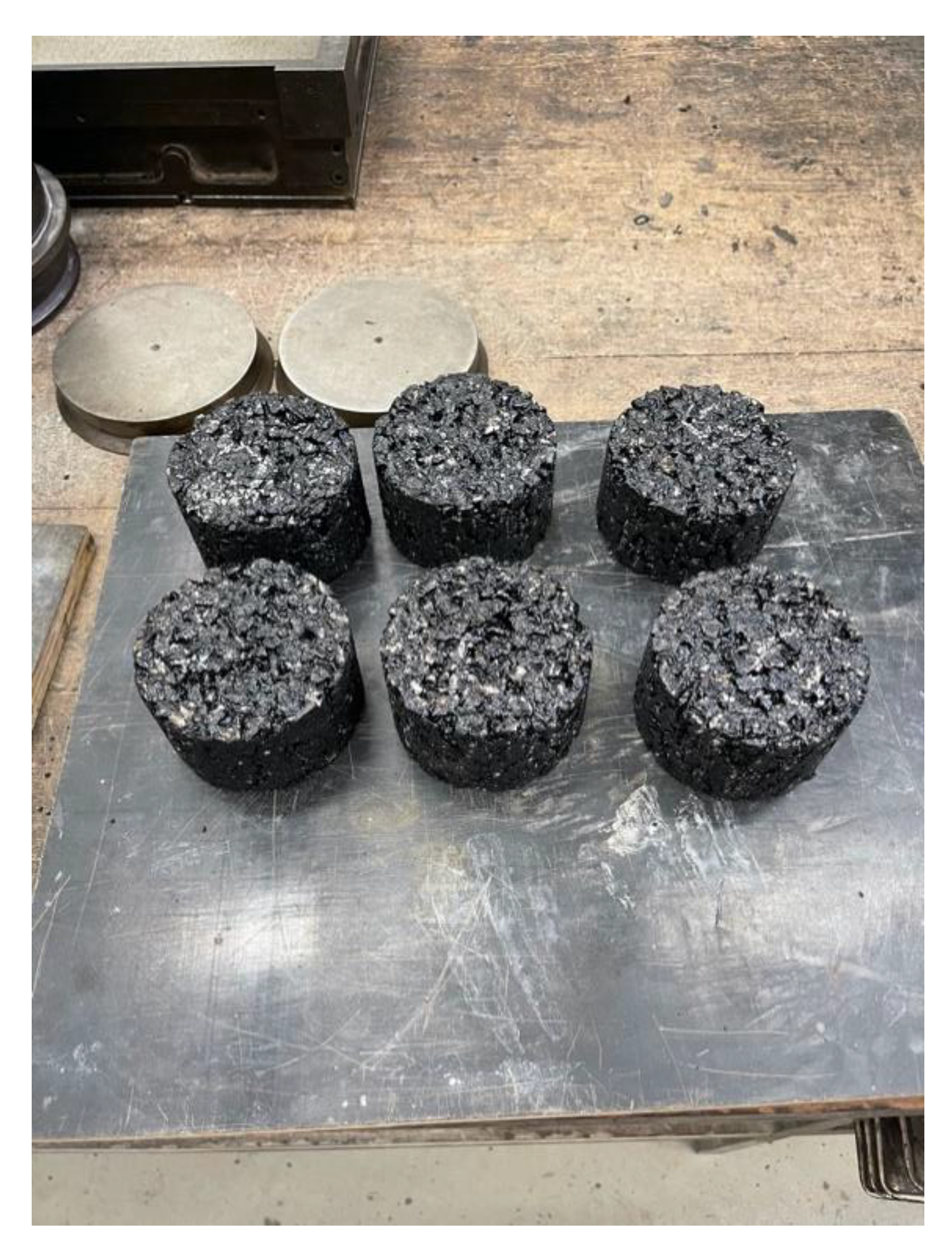
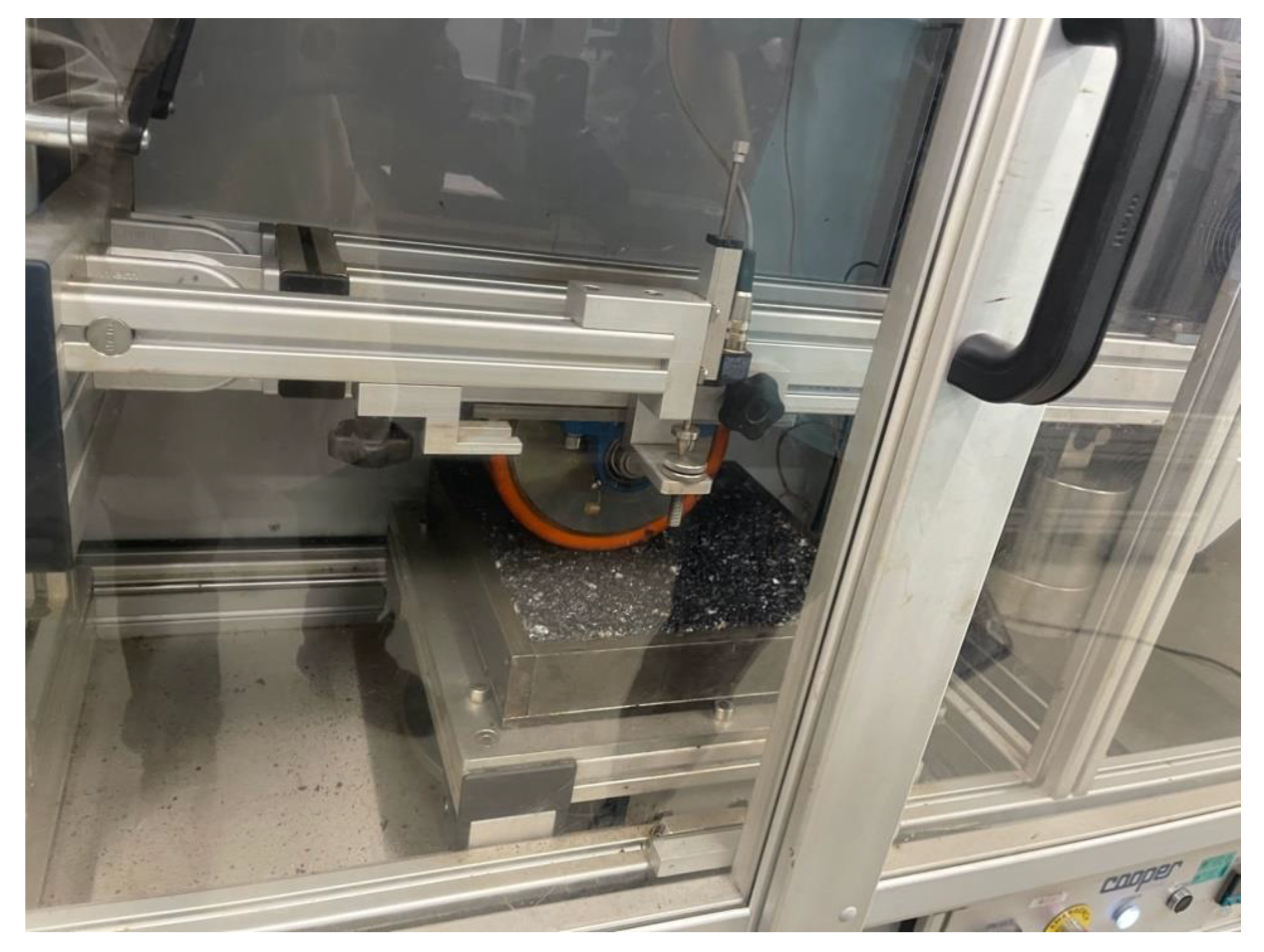

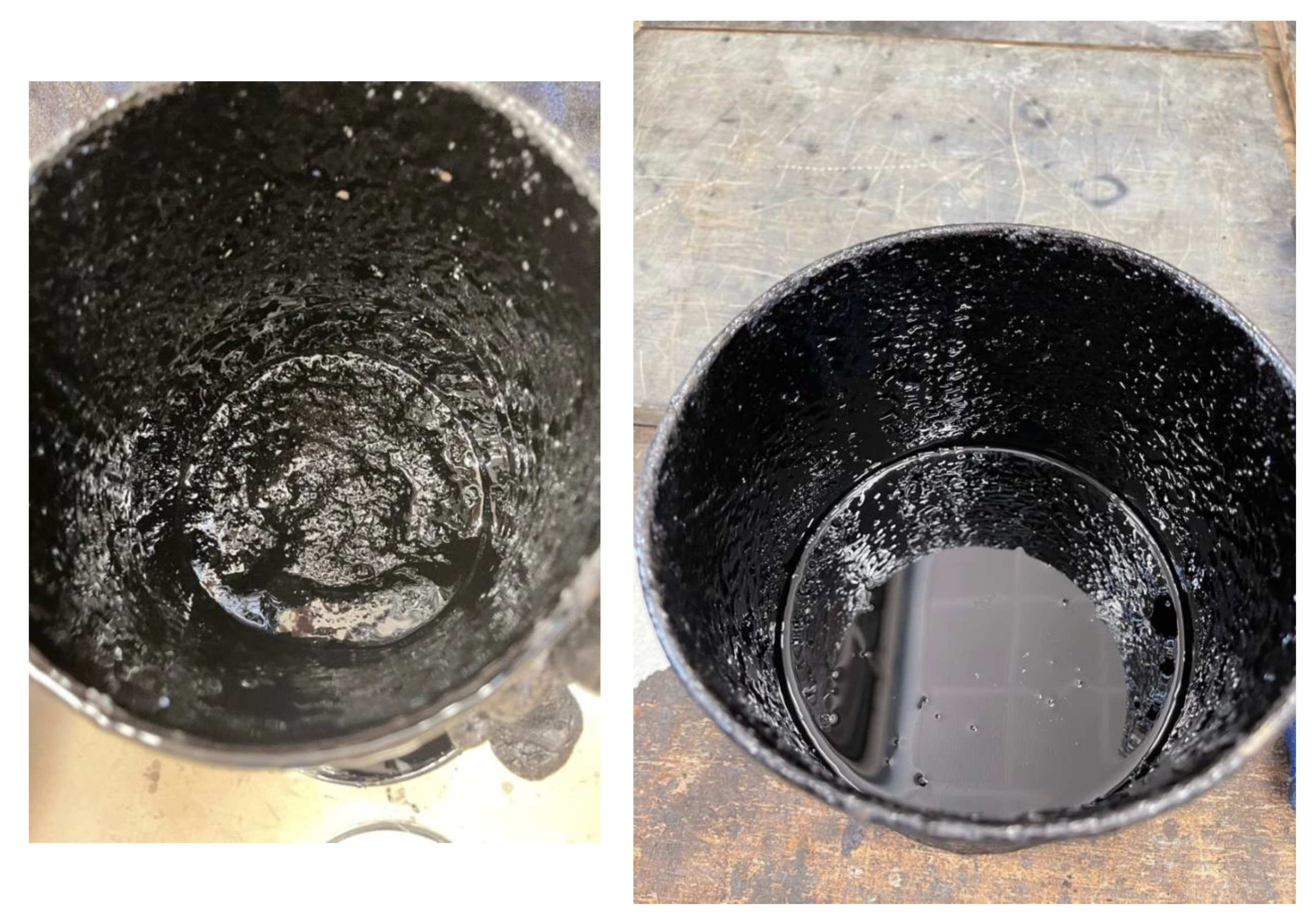
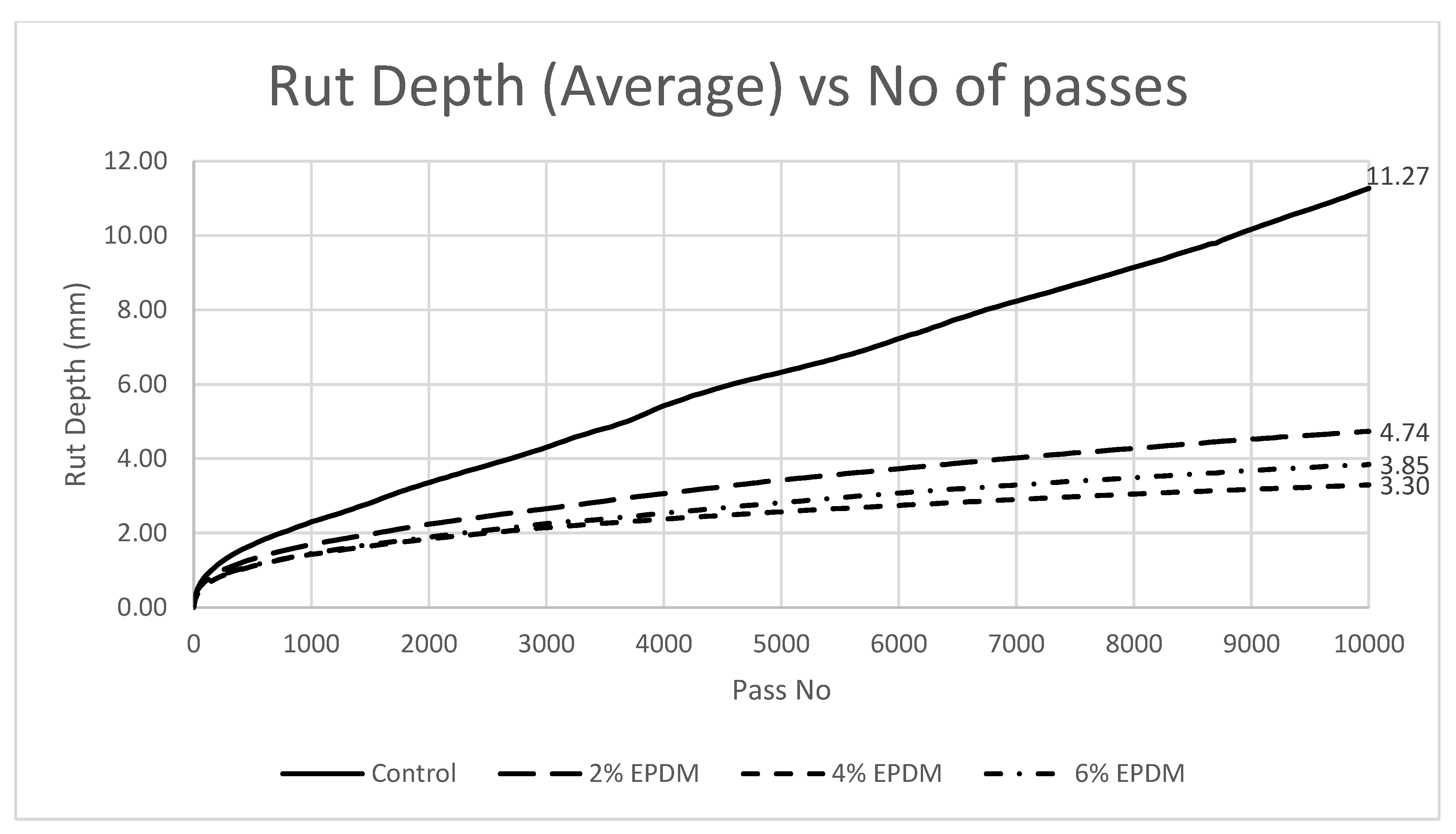

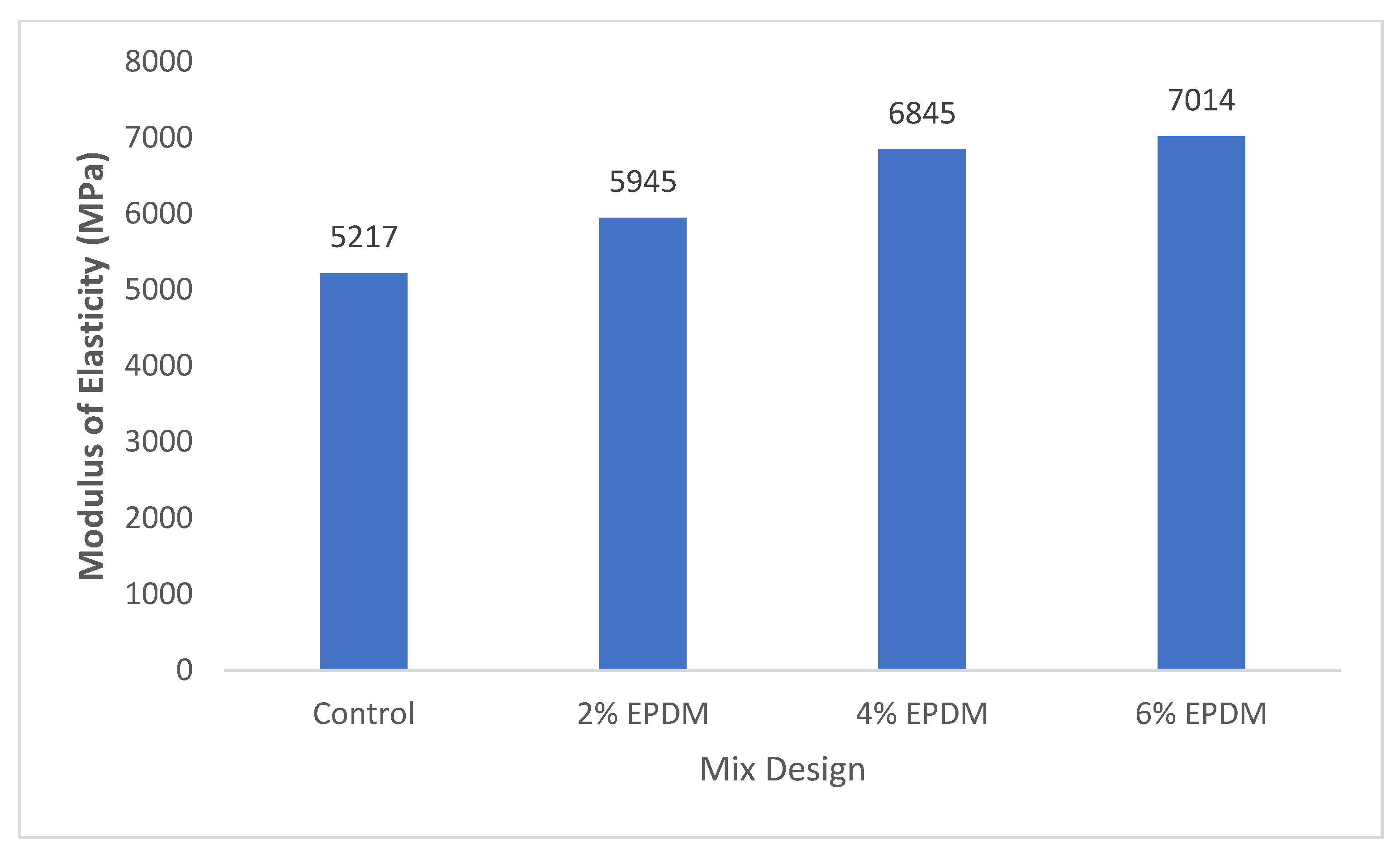
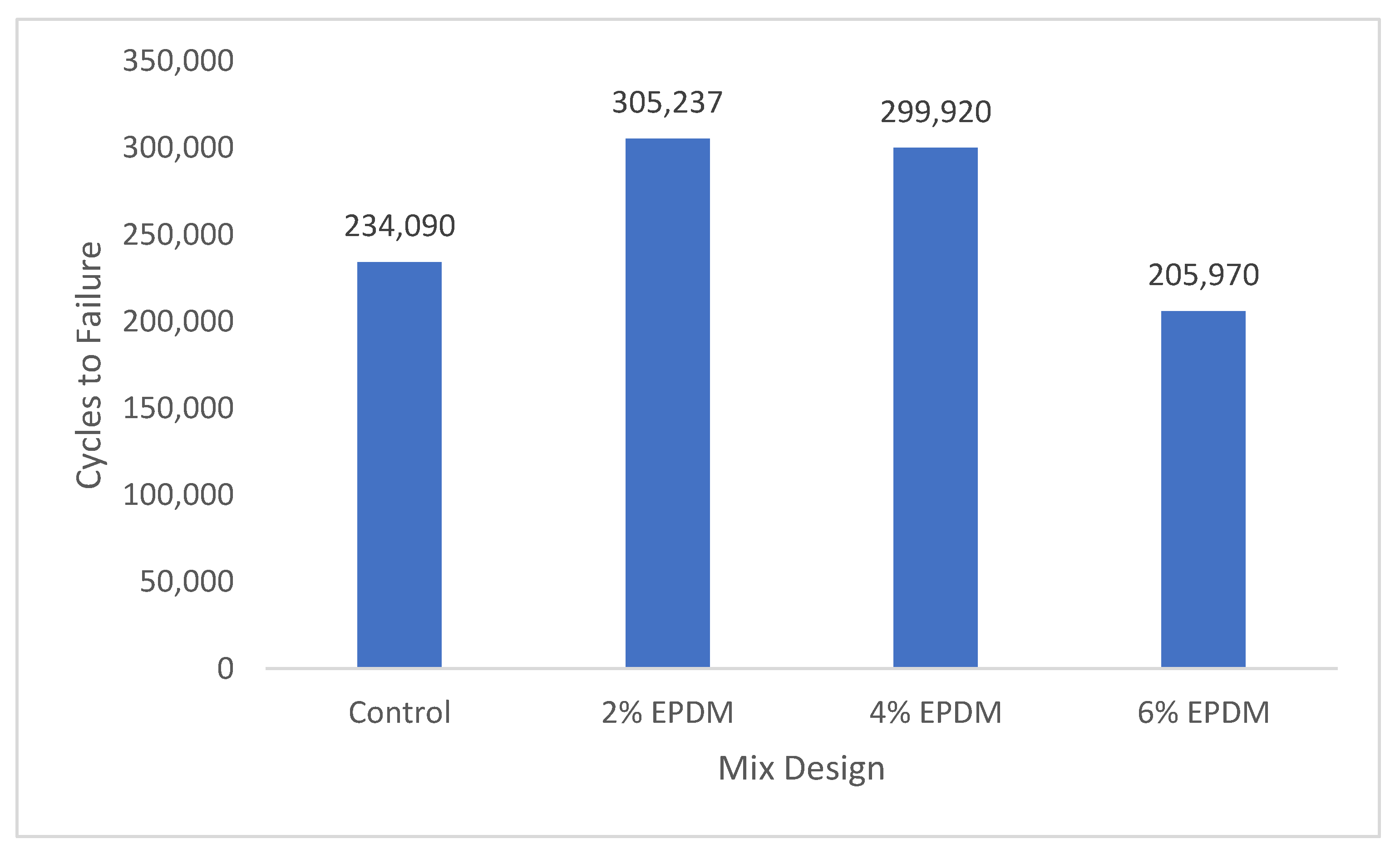

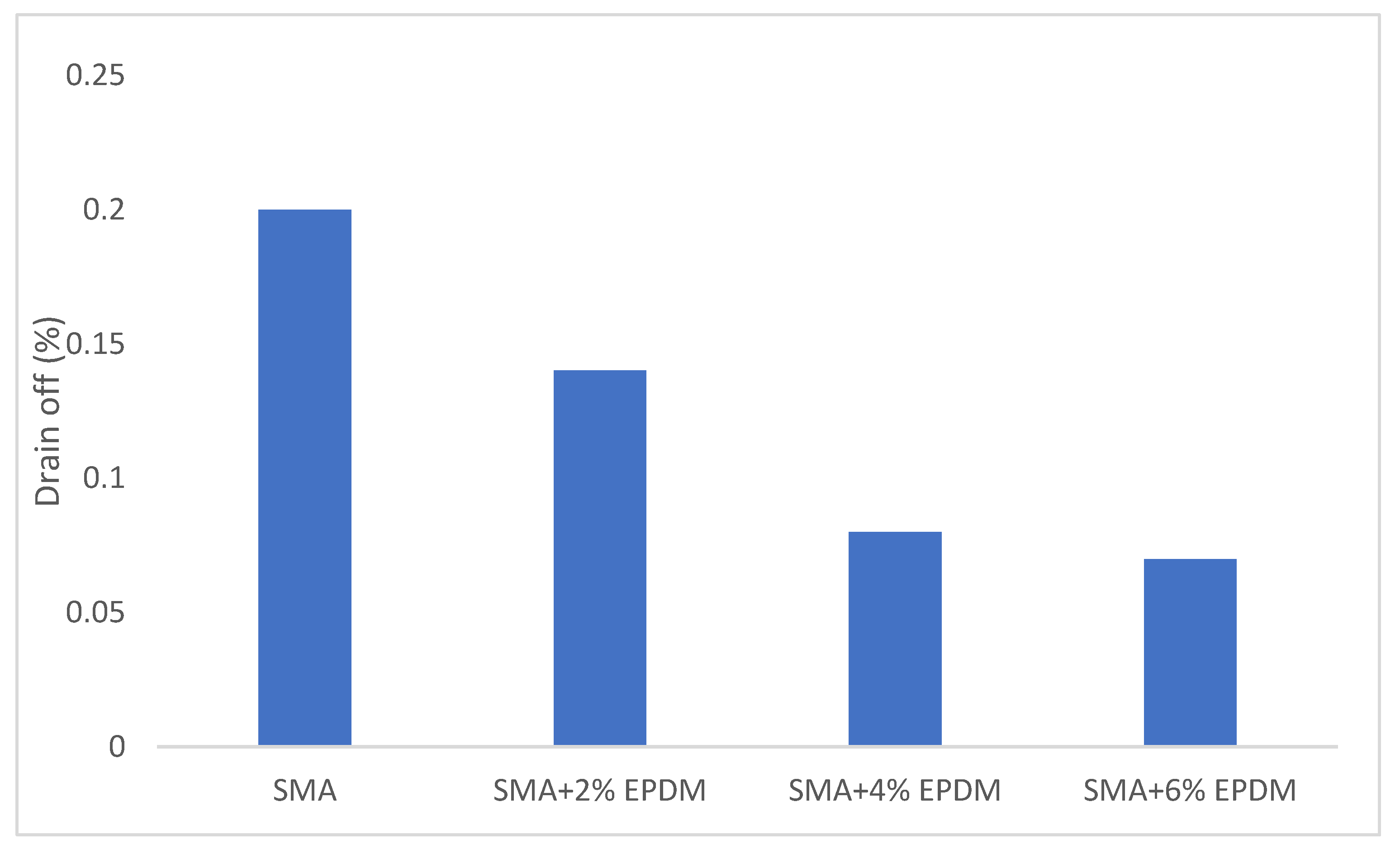
| Property | Value | Unit | Standard |
|---|---|---|---|
| Viscosity at 60 °C | 320 | Pa·s | AS 2341.2 |
| Viscosity at 135 °C | 0.5 | Pa·s | AS 2341.2 |
| Pen at 25 °C | Min. 40 | DMM | AS 2341.12 |
| Flashpoint | Min. 250 | °C | AS 2341.14 |
| Viscosity of residue at 60 °C (% of original) | Min. 300 | Pa·s | AS 2341.2 |
| Properties | Value | Unit |
|---|---|---|
| Cellulose content | 80 | % |
| Mean length | 1.10 | mm |
| Mean thickness | 0.04 | mm |
| Bulk density | 0.47 | g/cm3 |
| Australian Standard Sieve Size mm (AS1152) | Percentage Passing (Nominal 10 mm Granite Mix) | |
|---|---|---|
| Lower Limit | Upper Limit | |
| 13.2 | 100 | 100 |
| 9.50 | 90 | 100 |
| 6.70 | 25 | 40 |
| 4.75 | 18 | 30 |
| 2.36 | 15 | 28 |
| 1.17 | 13 | 24 |
| 0.600 | 12 | 21 |
| 0.300 | 10 | 18 |
| 0.150 | 9 | 14 |
| 0.075 | 8 | 12 |
| Property | Value | Relevant Standard |
|---|---|---|
| Coarse aggregate (retained by 2.36 mm sieve) | ||
| Apparent particle density | 2.6 | AS 1141.6.1 |
| Particle density on a dry basis | 2.59 | AS 1141.6.1 |
| LA value (%) | 21.9 | AS 1141.23 |
| Water absorption (%) | 0.4 | AS 1141.6.1 |
| Fine aggregate (retained by 0.075 mm sieve) | ||
| Apparent particle density | 2.59 | AS 1141.6.1 |
| Particle density on a dry basis | 2.58 | AS 1141.6.1 |
| LA value (%) | 21.9 | AS1141.23 |
| Water absorption (%) | 0.6 | AS 1141.6.1 |
| Property | Value | Unit |
|---|---|---|
| Solubility (20 °C) | 1.65 | g/L |
| (30 °C) | 1.53 | g/L |
| Angle of response—Fines | 15–80 | ° |
| Melting point | 2570 | °C |
| Property | Value |
|---|---|
| Specific gravity | 1.5 |
| Tensile strength (MPa) | 4.0 |
| Hardness (Shore A) | 65 ± 5 |
| Elongation (%) | 250 |
| Material | Percentage in the Mix (%) |
|---|---|
| Bitumen | 6.42 |
| Fibre | 0.30 |
| Holcim 13.2–9.5 | 4.66 |
| Holcim 9.5–6.7 | 60.63 |
| Holcim 6.7–4.75 | 8.40 |
| Quarry sand | 10.73 |
| Baghouse dust | 7.46 |
| Hydrated lime | 1.40 |
| Parameter | Minimum | Maximum |
|---|---|---|
| Marshall flow | 2.00 mm | 5.00 mm |
| Marshall stability | 6.0 kN | - |
| Voids in mineral aggregate: | ||
| Nominal 10 mm | 18.0% | - |
| Air Voids: | ||
| Nominal 10 mm | 3.5% | 5.5% |
| Asphalt Wheel-Tracking Test Parameter | Value for Compliance with AG:PT/T231 |
|---|---|
| Test temperature (°C) | 60 ± 1 |
| Air void content (%) | 5 ± 1 |
| Vertical load (N) | 700 ± 20 |
| Four-Point Beam Bending Test Parameter | Value for Compliance with AG:PT/T233 |
|---|---|
| Test temperature (°C) | 20 ± 0.5 |
| Loading frequency (Hz) | 10 ± 0.1 |
| Peak tensile strain for the 50th and subsequent cycles (με) | 400 ± 10 (i.e., ±2.5%) |
| Air void content (%) | 5 ± 0.5 |
| Number of replicants | 3 |
| Parameter | Results | |||
|---|---|---|---|---|
| Control | 2% | 4% | 6% | |
| Maximum density (t/m3) | 2.413 | 2.420 | 2.426 | 2.422 |
| Bulk density (t/m3) | 2.283 | 2.288 | 2.294 | 2.295 |
| Air voids (%) | 5.397 | 5.450 | 5.438 | 5.252 |
| Marshall stability (kN) | 7.380 | 8.801 | 9.169 | 8.054 |
| Marshall flow (mm) | 2.446 | 2.417 | 3.005 | 2.328 |
Publisher’s Note: MDPI stays neutral with regard to jurisdictional claims in published maps and institutional affiliations. |
© 2021 by the authors. Licensee MDPI, Basel, Switzerland. This article is an open access article distributed under the terms and conditions of the Creative Commons Attribution (CC BY) license (https://creativecommons.org/licenses/by/4.0/).
Share and Cite
Chegenizadeh, A.; Aung, M.-O.; Nikraz, H. Ethylene Propylene Diene Monomer (EPDM) Effect on Asphalt Performance. Buildings 2021, 11, 315. https://doi.org/10.3390/buildings11080315
Chegenizadeh A, Aung M-O, Nikraz H. Ethylene Propylene Diene Monomer (EPDM) Effect on Asphalt Performance. Buildings. 2021; 11(8):315. https://doi.org/10.3390/buildings11080315
Chicago/Turabian StyleChegenizadeh, Amin, Minn-Oo Aung, and Hamid Nikraz. 2021. "Ethylene Propylene Diene Monomer (EPDM) Effect on Asphalt Performance" Buildings 11, no. 8: 315. https://doi.org/10.3390/buildings11080315
APA StyleChegenizadeh, A., Aung, M.-O., & Nikraz, H. (2021). Ethylene Propylene Diene Monomer (EPDM) Effect on Asphalt Performance. Buildings, 11(8), 315. https://doi.org/10.3390/buildings11080315






